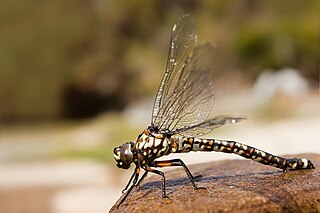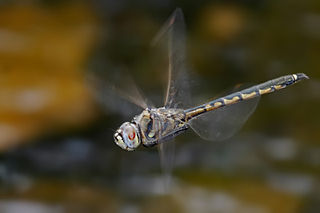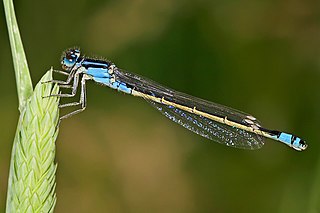
The Aeshnidae, also called aeshnids, hawkers, or darners, is a family of dragonflies. The family includes the largest dragonflies found in North America and Europe and among the largest dragonflies on the planet.

The skimmers or perchers and their relatives form the Libellulidae, the largest dragonfly family in the world. It is sometimes considered to contain the Corduliidae as the subfamily Corduliinae and the Macromiidae as the subfamily Macromiinae. Even if these are excluded, there still remains a family of over 1000 species. With nearly worldwide distribution, these are almost certainly the most often seen of all dragonflies.

The insect family Coenagrionidae is placed in the order Odonata and the suborder Zygoptera. The Zygoptera are the damselflies, which although less known than the dragonflies, are no less common. More than 1,300 species are in this family, making it the largest damselfly family. The family Coenagrionidae has six subfamilies: Agriocnemidinae, Argiinae, Coenagrioninae, Ischnurinae, Leptobasinae, and Pseudagrioninae.

Erythrodiplax is a large Neotropical genus of dragonflies in the family Libellulidae. These small to medium-sized skimmers are commonly known as Dragonlets

Gynacantha is a genus of dragonflies in the family Aeshnidae. The females have two prominent spines under the last abdominal segment. This gives the genus name and the common name two-spined darners; they are also known as duskhawkers.

Heliogomphus is a genus of dragonflies in the family Gomphidae.

Hemicordulia is a genus of dragonfly in family Corduliidae. It occurs in Africa, southern Asia, and Australasia. Species of Hemicordulia are small to medium-sized dragonflies, coloured black or metallic, with yellow.

Ischnura is a genus of damselflies known as forktails in the family Coenagrionidae. Forktails are distributed worldwide, including various oceanic islands. The males have a forked projection at the tip of the abdomen which gives the group their common name.
Leptogomphus is a genus of dragonfly in the family Gomphidae. It contains the following species:

Lestes is a genus of damselfly in the family Lestidae. The family hold their wings at about 45 degrees to the body when resting. This distinguishes them from most other species of damselflies which hold the wings along, and parallel to, the body when at rest.

Macromia is a genus of large dragonflies in the family Macromiidae. They are commonly known as river cruisers from their habit of cruising long distances along river banks. Most species of Macromia occur in the tropical Australasian region, with one species being found in Europe , and a few species occurring in North America.

Paragomphus is a genus of dragonfly in the family Gomphidae. They are commonly known as Hooktails.

Platycnemis is a genus of damselfly in the family Platycnemididae.

Pseudagrion is the largest genus of damselfly in the family Coenagrionidae, with over 140 species. Its range includes most of Africa, much of Asia, and Australia. Africa holds most of the diversity with almost 100 species. It has occupied most of the freshwater habitats in its range, and dominates damselfly communities in habitats as different as desert pools, equatorial rainforests and montane streams.

Teinobasis is a genus of damselflies in the family Coenagrionidae. Species occur in south-eastern Asia, Indonesia, Solomon Islands and Micronesia; one species, Teinobasis rufithorax, is found in Australia.

Vestalis is a genus of damselflies belonging to the family Calopterygidae.

Heliocypha is a genus of jewel damselflies in the family Chlorocyphidae. There are about nine described species in Heliocypha, found in Indomalaya.

Euphaea is a genus of damselflies in the family Euphaeidae. There are more than 30 described species in Euphaea, found mainly in Indomalaya.





















